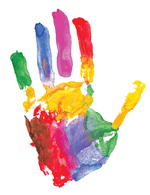
I believe that including a diversity of opinions in the decision making process leads to better outcomes for governments and their citizens. And, I think that many of my colleagues share this belief. The challenge arises when we try to define “diversity” and set performance measures to determine if we have been successful in reaching and engaging our diverse residents.
When I talk with people about diversity, I hear a lot of questions.
- Do we limit ourselves to the standards of age, gender and ethnicity?
- Do we expand our understanding to include sexual orientation, income levels, and marital status? Is it important to have a mixture of parents and non-parents?
- What participation ratio is desirable for each group?
- Can a person represent more than one category?
- How do we avoid tokenism?
I don’t have the answers to these questions. I wonder if it would be helpful if a local government’s definition of “diversity” was tied to interests.
For example, if a new playground is being built, parents may share the same interests regardless of age, gender or sexual orientation. While parents of different income levels or whose children have disabilities may have specific interests that need to be represented in order to create a space that meets the need of all. i.e. is the park served by public transportation? Is the equipment accessible to those with limited mobility?
As I continue to grapple with the issue of diversity and look for strategies to bring as many people into the decision making process as possible, I am interested in learning how you have handled this issue.
Does your organization have a definition for “diversity”? If so, what is it and how does your understanding of diversity impact your outreach and engagement efforts?
Jennifer – very good questions. I can’t provide an example to show how diversity plays out, but let me offer points:
a) Age, gender, race, disability, and kinds of connections to the community [resident, business, religious, etc.] seem to be starting points for what kinds of diversity are worth seeking and measuring most outreach efforts.
b) The project or topic often guides other dimensions of diversity: your playground example is a good one.
c) Geographic/neighborhood participation is often important: either to be sure no section of town is overlooked, or because of a particular history of city services and involvement (or lack thereof) raises the importance of this kind of diversity.
d) I think the newest dimension is online, phone, and in-person methods and goals for outreach. Being mindful of the digital divide, communities cannot assume that email and web notices are sufficient. At the same time, many people are comfortable doing online surveys or other “higher tech” participation methods. How to balance the newer and older forms of participation ties in to several aspects of seeking, and getting, diversity of input.
I, too, hope we can hear from particular communities to respond to your questions.